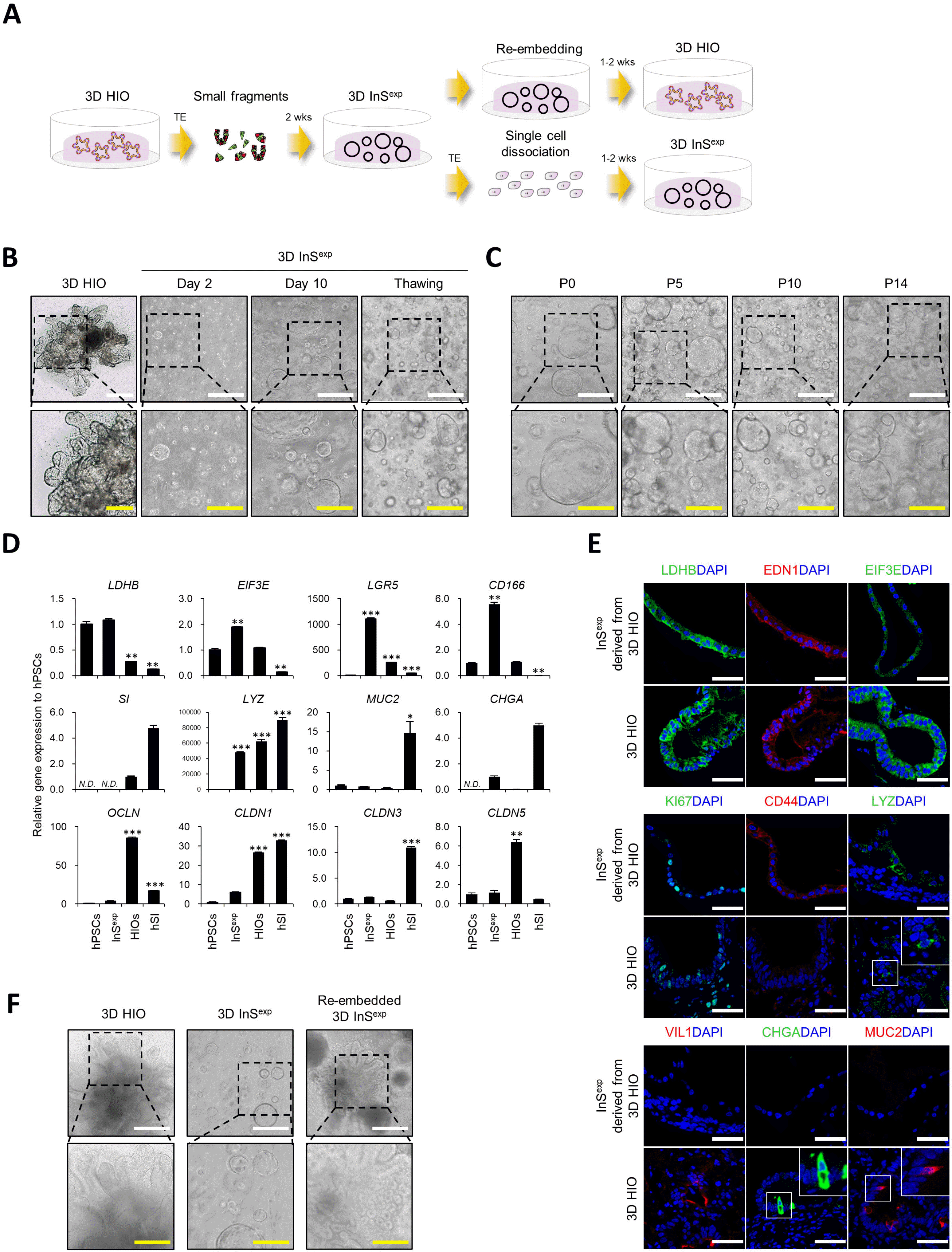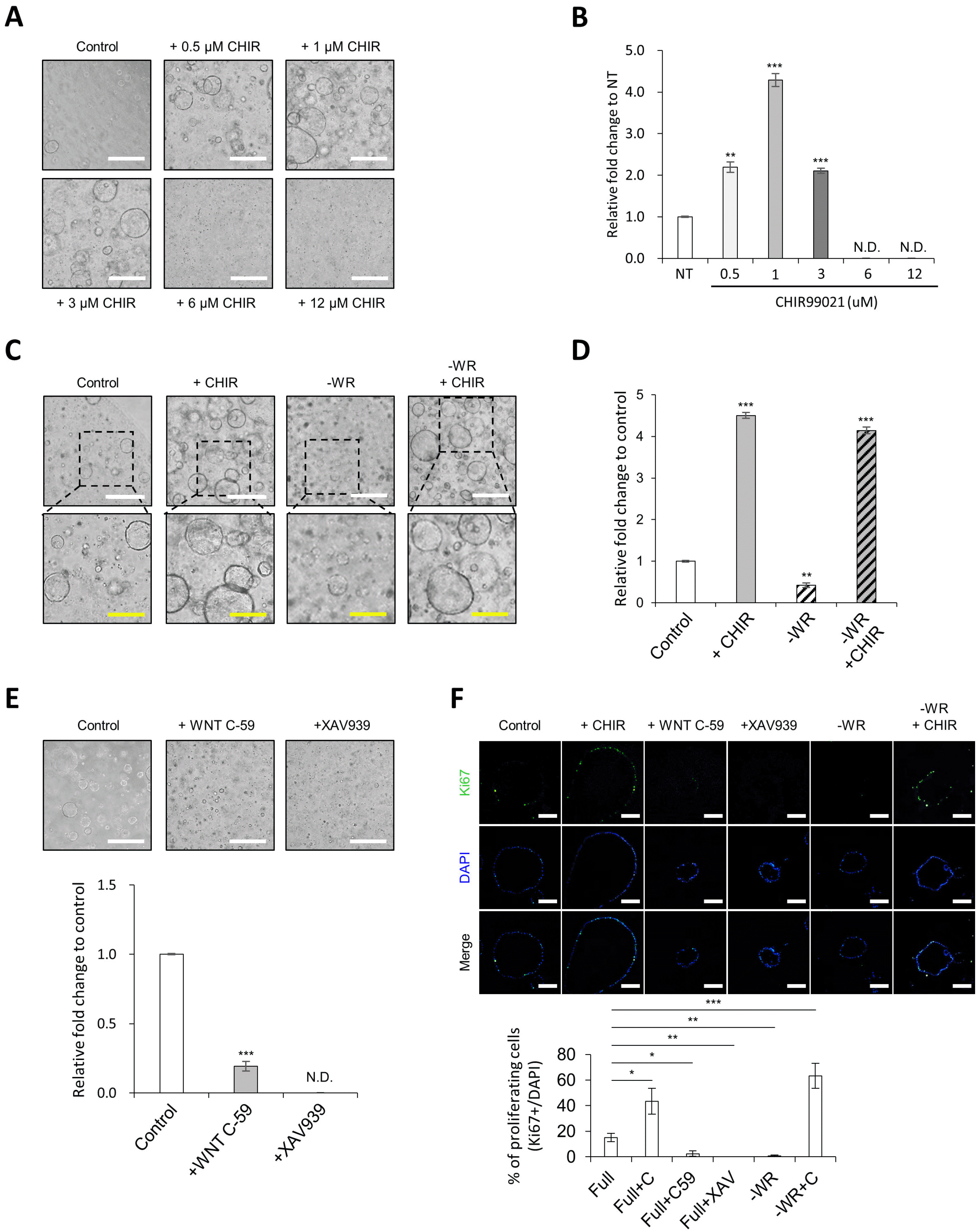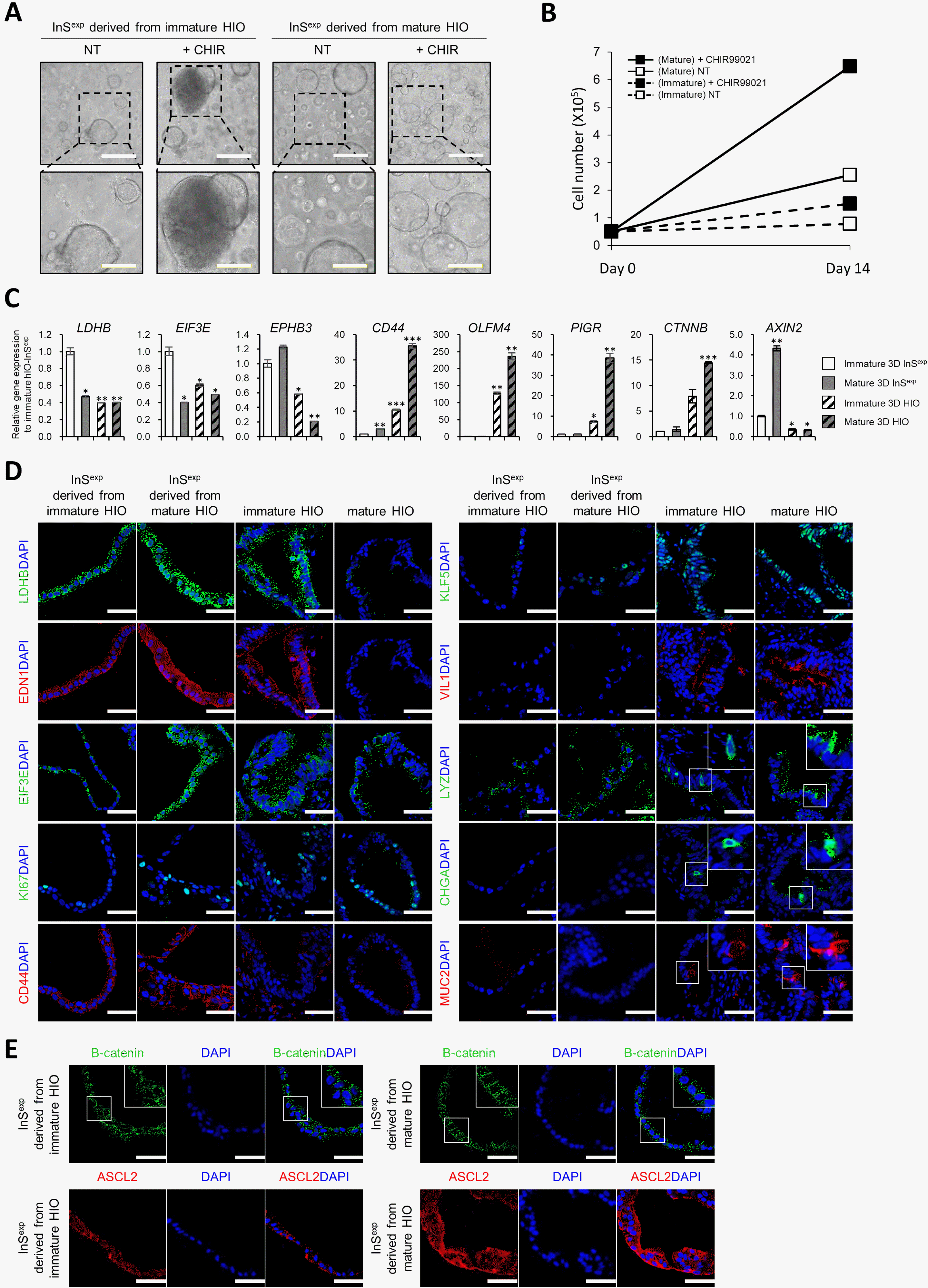1. Spence JR, Mayhew CN, Rankin SA, Kuhar MF, Vallance JE, Tolle K, Hoskins EE, Kalinichenko VV, Wells SI, Zorn AM, Shroyer NF, Wells JM. 2011; Directed differentiation of human pluripotent stem cells into intestinal tissue in vitro. Nature. 470:105–109. DOI:
10.1038/nature09691. PMID:
21151107. PMCID:
PMC3033971.

2. Jung KB, Lee H, Son YS, Lee MO, Kim YD, Oh SJ, Kwon O, Cho S, Cho HS, Kim DS, Oh JH, Zilbauer M, Min JK, Jung CR, Kim J, Son MY. 2018; Interleukin-2 induces the in vitro maturation of human pluripotent stem cell-derived intestinal organoids. Nat Commun. 9:3039. DOI:
10.1038/s41467-018-05450-8. PMID:
30072687. PMCID:
PMC6072745. PMID:
a475745ef0d7496ba465e8488bf0de6b.

5. Gracz AD, Magness ST. 2014; Defining hierarchies of stemness in the intestine: evidence from biomarkers and regulatory pathways. Am J Physiol Gastrointest Liver Physiol. 307:G260–G273. DOI:
10.1152/ajpgi.00066.2014. PMID:
24924746. PMCID:
PMC4121637.

6. Son MY, Sim H, Son YS, Jung KB, Lee MO, Oh JH, Chung SK, Jung CR, Kim J. 2017; Distinctive genomic signature of neural and intestinal organoids from familial Parkinson's disease patient-derived induced pluripotent stem cells. Neuropathol Appl Neurobiol. 43:584–603. DOI:
10.1111/nan.12396. PMID:
28235153.

7. Kwon O, Jung KB, Lee KR, Son YS, Lee H, Kim JJ, Kim K, Lee S, Song YK, Jung J, Park K, Kim DS, Son MJ, Lee MO, Han TS, Cho HS, Oh SJ, Chung H, Kim SH, Chung KS, Kim J, Jung CR, Son MY. 2021; The development of a functional human small intestinal epithelium model for drug absorption. Sci Adv. 7:eabh1586. DOI:
10.1126/sciadv.abh1586. PMID:
34078609.

8. Lee H, Son YS, Lee MO, Ryu JW, Park K, Kwon O, Jung KB, Kim K, Ryu TY, Baek A, Kim J, Jung CR, Ryu CM, Park YJ, Han TS, Kim DS, Cho HS, Son MY. 2020; Low-dose interleukin-2 alleviates dextran sodium sulfate-induced colitis in mice by recovering intestinal integrity and inhibiting AKT-dependent pathways. Theranostics. 10:5048–5063. DOI:
10.7150/thno.41534. PMID:
32308767. PMCID:
PMC7163458.

9. Yin X, Farin HF, van Es JH, Clevers H, Langer R, Karp JM. 2014; Niche-independent high-purity cultures of Lgr5+ intestinal stem cells and their progeny. Nat Methods. 11:106–112. DOI:
10.1038/nmeth.2737. PMID:
24292484. PMCID:
PMC3951815.

10. Fujii M, Matano M, Nanki K, Sato T. 2015; Efficient genetic engineering of human intestinal organoids using electroporation. Nat Protoc. 10:1474–1485. Erratum in: Nat Protoc 2019; 14:2595. DOI:
10.1038/nprot.2015.088. PMID:
26334867.

11. Yan KS, Janda CY, Chang J, Zheng GXY, Larkin KA, Luca VC, Chia LA, Mah AT, Han A, Terry JM, Ootani A, Roelf K, Lee M, Yuan J, Li X, Bolen CR, Wilhelmy J, Davies PS, Ueno H, von Furstenberg RJ, Belgrader P, Ziraldo SB, Ordonez H, Henning SJ, Wong MH, Snyder MP, Weissman IL, Hsueh AJ, Mikkelsen TS, Garcia KC, Kuo CJ. 2017; Non-equivalence of Wnt and R-spondin ligands during Lgr5
+ intestinal stem-cell self-renewal. Nature. 545:238–242. DOI:
10.1038/nature22313. PMID:
28467820. PMCID:
PMC5641471.

13. Costa J, Ahluwalia A. 2019; Advances and current challenges in intestinal in vitro model engineering: a digest. Front Bioeng Biotechnol. 7:144. DOI:
10.3389/fbioe.2019.00144. PMID:
31275931. PMCID:
PMC6591368.

14. Wang F, Scoville D, He XC, Mahe MM, Box A, Perry JM, Smith NR, Lei NY, Davies PS, Fuller MK, Haug JS, McClain M, Gracz AD, Ding S, Stelzner M, Dunn JC, Magness ST, Wong MH, Martin MG, Helmrath M, Li L. 2013; Isolation and characterization of intestinal stem cells based on surface marker combinations and colony-formation assay. Gastroenterology. 145:383–395.e1-e21. DOI:
10.1053/j.gastro.2013.04.050. PMID:
23644405. PMCID:
PMC3781924.

15. Watson CL, Mahe MM, Múnera J, Howell JC, Sundaram N, Poling HM, Schweitzer JI, Vallance JE, Mayhew CN, Sun Y, Grabowski G, Finkbeiner SR, Spence JR, Shroyer NF, Wells JM, Helmrath MA. 2014; An in vivo model of human small intestine using pluripotent stem cells. Nat Med. 20:1310–1314. DOI:
10.1038/nm.3737. PMID:
25326803. PMCID:
PMC4408376.

16. Poling HM, Wu D, Brown N, Baker M, Hausfeld TA, Huynh N, Chaffron S, Dunn JCY, Hogan SP, Wells JM, Helmrath MA, Mahe MM. 2018; Mechanically induced development and maturation of human intestinal organoids in vivo. Nat Biomed Eng. 2:429–442. DOI:
10.1038/s41551-018-0243-9. PMID:
30151330. PMCID:
PMC6108544.








 PDF
PDF Citation
Citation Print
Print


 XML Download
XML Download